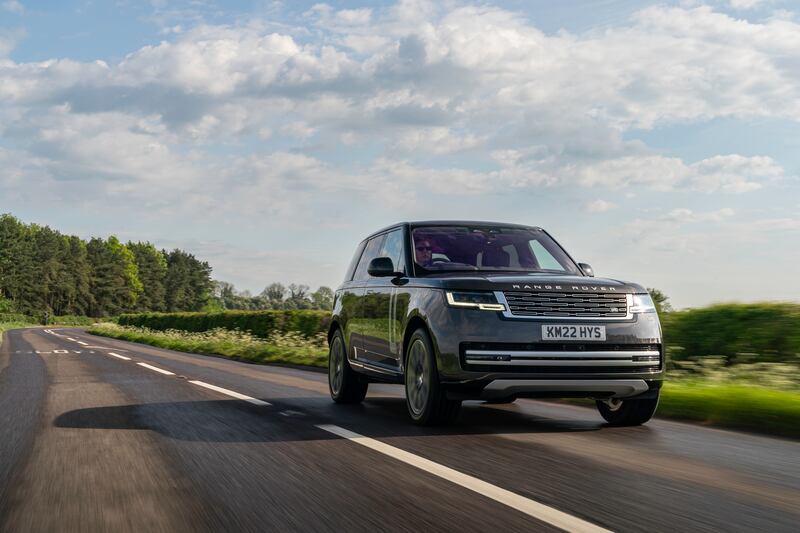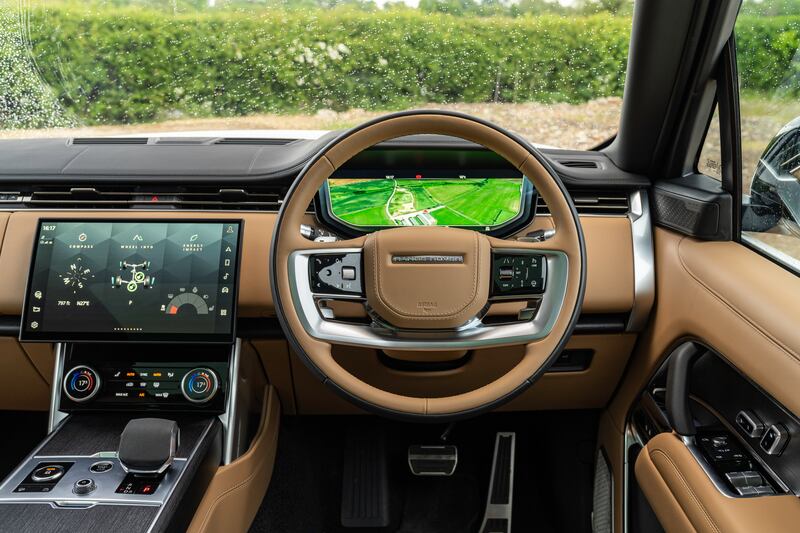There has been a discussion of late in The Irish Times garage, one that clearly taps into the motoring zeitgeist. Should you opt for the new Range Rover or save a few euro and pick the Range Rover Sport?
Don’t say we haven’t got our fingers on the pulse of the nation. It’s a question we received from a reader and one that warranted researched consideration. In other words, plenty of time coasting around Ireland in a Range Rover.
Having tested the Range Rover Sport several weeks ago, it was now time to wallow in the splendour of the flagship SUV.
The Sport has always been sharper to drive, but in its first guise was closer to the Land Rover Discovery than its supposed big brother.
READ MORE
By the second generation the gap had closed, with the Sport offering more family practicality and built on the same platform as the bigger Range Rover. Better practicality and driving appeal for a slightly lower price? You need to have a serious prejudice or love for the flagship model to bypass the Sport.
Now that gap has become a tiny chink, with the Sport mimicking the Range Rover in virtually every mechanical and styling detail, but at a price point at least €24,000 less. So you can walk away with a splendid Sport plus pick up a new family runaround for the same price as the full-fat Range Rover.

It begs the question: what’s the lure of the flagship model other than some anachronistic loyalty to the halcyon days when it was the ultimate in luxury off-roading for landowners?
It’s hard to see any other reason for it. Both cars share the same impressive power-train – Land Rover’s latest P440e plug-in hybrid system. This marries a 30.1kWh battery and 105kW electric motor delivering 113km of electric-only range on a full charge, with a three-litre six-cylinder petrol engine. The end result is a car delivering 440hp and a tree-trunk tugging 620Nm of torque.
On a variety of roads, from motorways to mountain passes, we tested the Range Rover in full-electric and petrol-only mode. The end result was a fuel figure in the realm of 8.4l/100km, but one that could manage close to the 100km on full electric for most journeys.
If you think current Range Rover drivers are smug, imagine what they’re going to be like now that they can garner the eco-credentials of running completely on electric as well, not to mention the fact their annual motor tax bill is a mere €140, while many of those they waft past are paying three times that amount to keep their jalopy on the road.
Running on electric only adds to that aura of calm when cocooned in all that leather and thick carpet. This isn’t so much a comfy sofa on wheels as the entire “good room” that every Irish house used to have; the one that only special visitors were allowed to visit.
But here again there is only the subtlest of differences between this big brother and the better-priced Sport, and most of it is confined to the very back.
With the full-blooded Range Rover you get a slightly larger boot – 1,050 litres when loaded to the roof compared to the Sport’s 835 litres – and more stylised tail lights. But the biggest issue that loyalists make is at the back door. The Range Rover has a split tailgate while the Sport doesn’t.

My colleague Neil Briscoe makes its case as such. Buying a car such as this is simply not an objective proposition. The split tailgate not only gives you a little roadside theatre as it whirrs electrically open like some sort of exotic aluminium clam; it also gives you somewhere to sit when you’re having a picnic or watching Junior’s sports day. It is an intrinsic part of the Range Rover experience and has been since 1970. It may sound daft, but the Sport is the lesser car for lacking it.
Accepting the Sport is better on the road as well, Neil makes the case that the Range Rover’s noticeably softer suspension set-up means it rolls more in corners, bobs and nods its nose when you ask it to do anything interesting, and has slower, less well-assured steering. So how is that better? Because you feel needed – as the driver of the Range Rover, you feel that it needs you to guide and steer it, whereas the Sport, for all its brilliance, can feel a touch remote and not bothered about including you in the process.

Parking the tailgate debate – you could buy a pretty impressive mobile gazebo for the money you save on opting for the Sport – I don’t see the point in paying more for inferior dynamics just to feel needed.
Yet there remains an intangible attraction to this Range Rover, one that defies any objective argument in favour of the Sport or its growing fleet of challengers.
The simple truth is that nothing can match the sense of self-satisfaction owners get when they’ve got a Range Rover on the driveway. You need nothing more to announce to the world that you’ve made it. As good as the Sport is, you still have to explain to folks why you made the more sensible choice. And when you are explaining, you’re losing.
Lowdown: Range Rover P440e PHEV
Power: 3.0 six-cylinder turbo petrol engine and 105kW electric motor developing 440hp and 620Nm of torque, powering all four wheels via an eight-speed automatic transmission.
CO2 emissions (annual motor tax): 19g/km (€140).
Electric range: 113km (WLTP).
Fuel economy: 0.9l/100km (WLTP)
0-100km/h: 5.7 sec.
Price: €161,975 as tested.
Our rating: 3/5.
Verdict: Range Rover Sport is a better buy, but the allure of the big brother remains.













